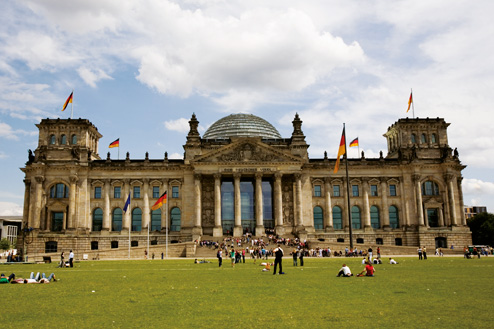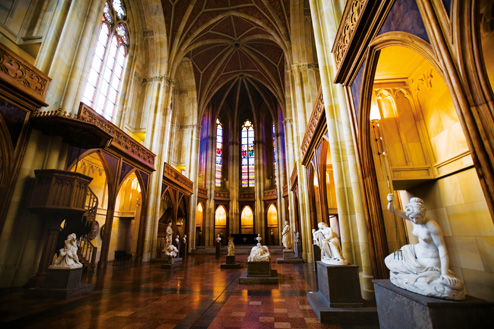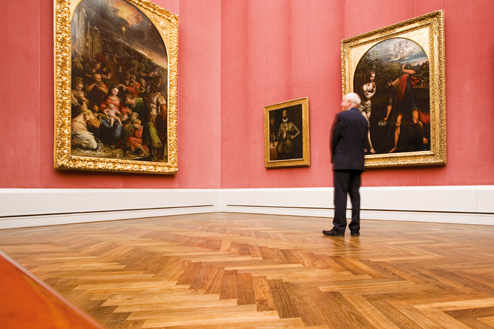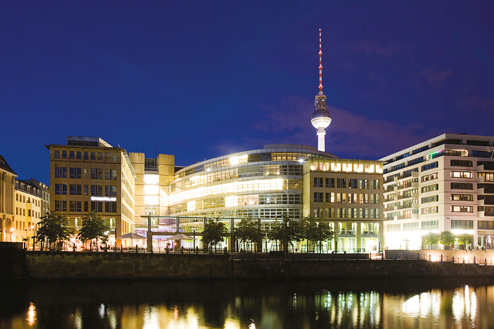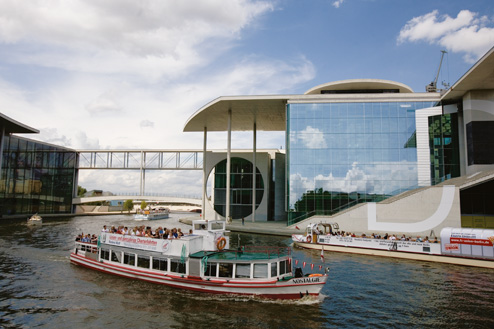Dresden
Obliterated by massive firestorms during the Allied bombings of 1945, Dresden remained in large part ruined throughout the decades of GDR rule. The city began to heave back to life with massive reconstruction in the 90s, culminating in the 2006 unveiling of the splendidly restored Frauenkirche (www.frauenkirche-dresden.de), a cathedral considered one of the great masterpieces of the German baroque style. This reborn emblem of Dresden is now mottled with bricks from the ruins of the old Frauenkirche, a constant reminder of its past. Many restored buildings in the old city reflect its baroque legacy, and the 300 year old Neustadt across the Elbe from the old town remains largely intact. Walking further outward from the city centre, however, you will find plenty of nasty GDR-era concrete blocks.
Besides the Frauenkirche, Dresden’s top attractions are its excellent art museums. The Zwinger (www.skd-dresden.de) houses a stunning painting collection, and the Albertinum (www.skd-dresden.de) is home to impressive sculptures, jewellery, coins, and paintings. Near the Zwinger is another restored baroque masterpiece, the Semper Opera (www.semperoper.de). One of Germany’s top opera houses, the Semper has counted Wagner and Weber among its conductors. Tourists descend on Dresden in droves during advent, when it hosts Germany’s oldest Christmas market, the Striezelmarkt. The market, which has been running since 1434, prides itself on Christstollen, the city’s famous fruitcake. The market culminates each year in Stollenfest, where a giant Christstollen rolls through the city to the square, where a girl crowned the Stollenmädchen cuts the four-ton fruitcake with the traditional ‘Dresdener Stollen Knife’ and distributes pieces to the waiting crowd. For restaurants, cafes, and bars, head to the area north and east of Albertplatz. More raucous nightlife concentrates in the student district in the Neustadt, complete with lots of scruffy student bars. In general, Dresden nightlife is rather touristy in the Altstadt. Dresden is two hours from Berlin by train or car. If you arrive by train, don’t be disheartened by the hideous street running from the station to the city centre – not all of Dresden looks like this.
Besides the Frauenkirche, Dresden’s top attractions are its excellent art museums. The Zwinger (www.skd-dresden.de) houses a stunning painting collection, and the Albertinum (www.skd-dresden.de) is home to impressive sculptures, jewellery, coins, and paintings. Near the Zwinger is another restored baroque masterpiece, the Semper Opera (www.semperoper.de). One of Germany’s top opera houses, the Semper has counted Wagner and Weber among its conductors. Tourists descend on Dresden in droves during advent, when it hosts Germany’s oldest Christmas market, the Striezelmarkt. The market, which has been running since 1434, prides itself on Christstollen, the city’s famous fruitcake. The market culminates each year in Stollenfest, where a giant Christstollen rolls through the city to the square, where a girl crowned the Stollenmädchen cuts the four-ton fruitcake with the traditional ‘Dresdener Stollen Knife’ and distributes pieces to the waiting crowd. For restaurants, cafes, and bars, head to the area north and east of Albertplatz. More raucous nightlife concentrates in the student district in the Neustadt, complete with lots of scruffy student bars. In general, Dresden nightlife is rather touristy in the Altstadt. Dresden is two hours from Berlin by train or car. If you arrive by train, don’t be disheartened by the hideous street running from the station to the city centre – not all of Dresden looks like this.

